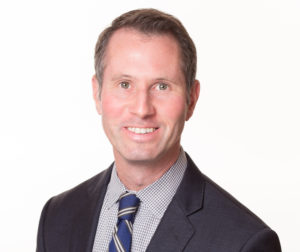by Tim Gorton, Healthcare Executive
 February 2020 – Healthcare AI is here to stay. Millions of dollars have been invested in it. Products and systems continue to be developed and used to advance innovation and enhance the patient experience[1]. Yet, how do hospitals and health systems sustain AI innovation while also remaining regulatory compliant? Innovation works best outside the proverbial box, while compliance needs to work within it. Inverting this traditional model, AI can work within the compliance box and compliance can be forward thinking around AI advancements.
February 2020 – Healthcare AI is here to stay. Millions of dollars have been invested in it. Products and systems continue to be developed and used to advance innovation and enhance the patient experience[1]. Yet, how do hospitals and health systems sustain AI innovation while also remaining regulatory compliant? Innovation works best outside the proverbial box, while compliance needs to work within it. Inverting this traditional model, AI can work within the compliance box and compliance can be forward thinking around AI advancements.
Focusing first on the compliance box, it’s important to note that, while there are state-specific governing bodies and regulations, for the purposes of this conversation we’ll generally focus on federal, regulatory compliance. Federal requirements are led by the Office of Inspector General (OIG). The OIG expects health entities to adhere to a culture of compliance through effective detection and prevention of healthcare fraud, waste and abuse.
In part, fraud is knowingly and willingly committing offenses against payers in the form of unethical billing, coding and financial transactions. An example of fraud is knowingly falsifying billing claims or medical records to receive a higher level of payment. Waste is an overuse of services or misuse of resources. Examples of waste include ordering excessive lab tests and overprescribing medications. Abuse is conduct that may directly or indirectly result in an unnecessary cost to payers. An example of abuse is excessively charging for services or supplies.
How does AI innovation come into play with maintaining a compliance culture? AI’s focus on technology and data should be part of a digital compliance framework[2]. As an example, hospital and health system leaders should take stock of all technologies used and how these technologies positively affect clinical outcomes; ethical, financial transactions; and the bottom line. It is important for leaders to review how technologies are helping people and processes with containing costs. Excessive costs and overutilization are considered waste.
On the other side, how can compliance be innovative while helping to sustain AI innovation? From the perspective of a Chief Compliance Officer, they know that regulators are always watching them and that regulators focus on facts and evidence. Throughout the course of conducting hospital and health system risk assessments, effective compliance programs should include AI products and systems in their assessments. Also, Chief Compliance Officers and their teams should be active participants when Chief Technology Officers review and adopt new technologies. Being actively involved before a new technology is adopted will help the teams stay in front of external, regulatory intervention when there are allegations of suspected fraud, waste and abuse.
In healthcare, AI will not be going away and neither will Compliance. Innovation is a process that advances the patient experience while expecting healthy margins. At the same time, it’s important that the innovation process works within a compliant framework to protect patients, providers and payers. With an open mind, executives can effectively lead their teams through ethical innovation while keeping an eye on regulatory compliance.
[1] The Medical Futurist, FDA Approvals for Smart Algorithms In Medicine In One Giant Infographic, June 2019, Accessed at: https://medicalfuturist.com/fda-approvals-for-algorithms-in-medicine/
[2] Risk and Compliance Magazine, Innovation in Compliance Management, Jan-March 2020, Accessed at: https://riskandcompliancemagazine.com/innovation-in-compliance-management
About the Author
Tim has spent his entire career working collaboratively with C-Suite and other healthcare leaders within New York City hospitals and health systems. Most recently, he was a consulting manager with EisnerAmper’s Healthcare Services Group and prior to that, he was for eight years a Senior Corporate Compliance Officer with the largest public healthcare system in the country. He is a past president of the largest, local chapter of the American College of Healthcare Executives (ACHE), Healthcare Leaders of NY (HLNY), which includes a diverse clinical and administrative membership. Tim is also a Fellow of the ACHE. Additionally, he was one of the 2014 recipients of the ACHE Early Career Healthcare Executive Regent’s award.


Leave a Reply